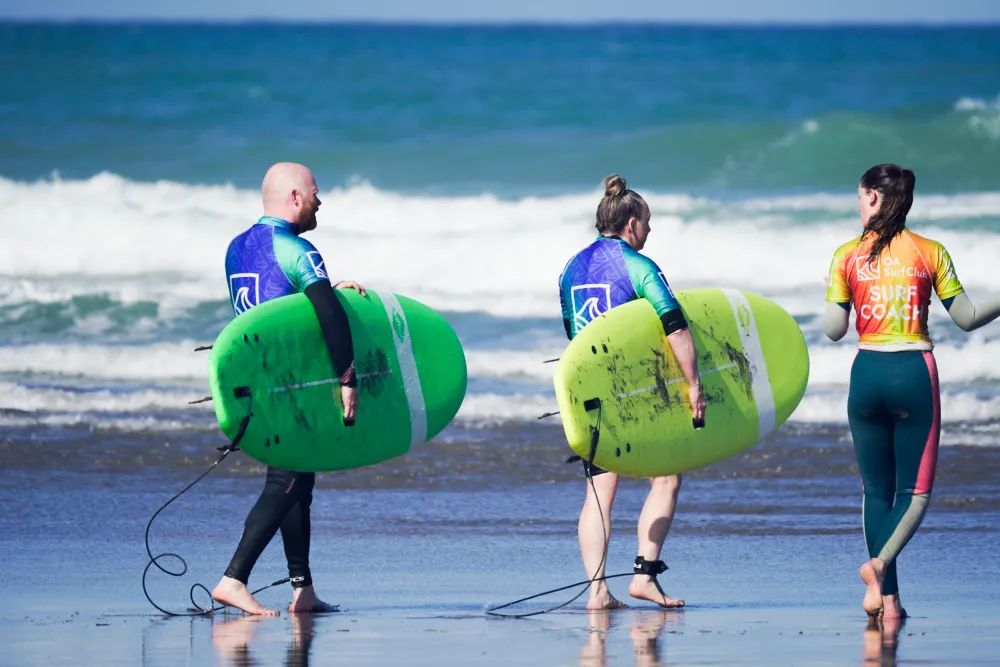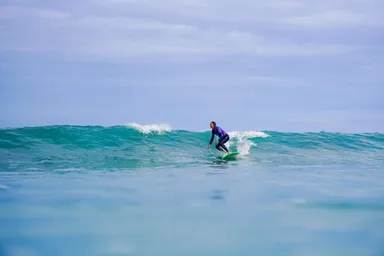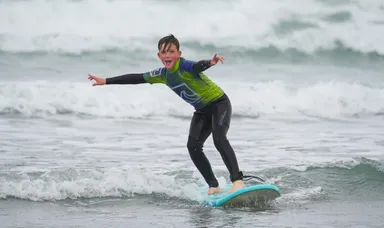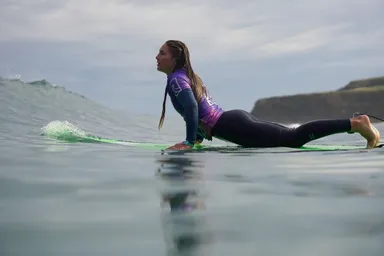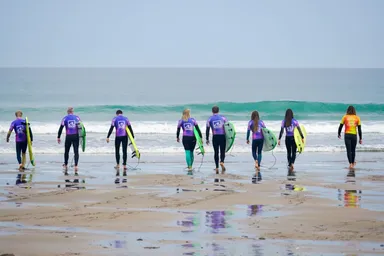When to step down: Foamie vs Hardboard
When to step down: Foamie vs Hardboard
When to step down: Foamie vs Hardboard
When to step down your surfboard- it's an eternal question every surfer must face at some stage in their life.
When am I ready to step down from a foamie to a hardboard?
It’s a question with many answers, and each one will differ depending on who is the one asking it.
For some, surfing is in their blood, they could catch a wave before they could walk and were riding dad’s old 5’4 as their first ever stick.
For others, surfing is a venture discovered later in life and even just being in the ocean may be a novelty.
Starting Out
When starting out, it’s always advisable to start out with the biggest, floatiest foamie you can find.
Here at OA we use Soft Tech foam boards for our beginner lessons, and we have a range from 7ft to 8ft with some wider models included in our quiver. These are fantastic for learning to catch waves as they offer a lot of stability as well as ease in catching the waves themselves.

Often once people have mastered popping up and riding straight on whitewater, they set their sights on moving down to a fibreglass or ‘hard’ board.
The issue here is that most fibreglass surfboard models have substantially less volume than their foam counterparts, and are generally slimmer in build. This limits their stability for learners and makes catching waves a trickier task.
That isn’t to say that fibreglass boards have no place in your surf progression however. As you begin to work on turning and trimming on unbroken waves, the thinner, harder rails of a fibreglass board can allow you more manoeuvrability as you progress.
The Step Down
So, when do you want to move between the two?
The real answer is consistently, throughout your whole surf life!
The notion that foamies are a beginner only board is radically outdated. We should match our surf craft to the conditions of the waves on any given day. Sometimes those 1ft clean offshore days are the best sessions of the week! In conditions like these, foam boards can make an excellent replacement for longboards, as they match the ability to catch smaller, weaker waves.

Also, with surfers such as Jamie O’Brien highlighting the ability of the humble soft top to perform in waves of consequence, many brands like Soft Tech have launched more performance-modelled foam boards in recent years. For example, the Soft Tech 5’10 Bomber available for use on our lessons!
Essentially, the idea that you ‘need’ to step down to a fibreglass board as part of your natural surf progression is categorically untrue.
If you are consistently catching waves, getting to your feet and riding along the water, and having a great time doing it, then why make life harder for yourself?
If you see your surf progression leading to performing radical manoeuvres in bigger swell, then at some stage you will need to move to a surfboard that allows for such performance.
In this instance however, you want to be comfortably catching waves, trimming down the line and starting to utilise the full wave face with ’s-turns’ and speed generation in your repertoire. These are all accessible manoeuvres on a foamie as well, so we’d generally recommend dialling all of that in on a Soft Top, before moving down to a hardboard.
Hardboards
When moving down to a hard top, start as long and as high volume as possible. Longboards are always a safe bet however they do have their own unique surf style that accompanies their use, so using a mini Mal or a egg can be a good alternative.
Usually anywhere between the 7’6-8ft range is a good place to start, and stick to while you relearn the basics on a fibreglass board.
Often times even simply paddling into a wave can become a tricky task once you size down your surfboard. Therefore, it’s important to take time to reestablish your foundations on your new board before looking to progress to manoeuvres. It can also become frustrating to see all the progress you made while on soft tops take a back peddle, so remember to be patient and have fun while you progress!
Hard boards are a lot like diamonds- each is unique! Hardboards of the same length are not all made equal, and differences in construction, width and fin set up can make a big difference in how they are surfed and in what conditions they are designed to be surfed.

The best way to figure out where to progress to once you’ve mastered your first hard board is simply through play! Renting or borrowing from friends is a great way to experiment and try out different boards to figure out what suits you well, as well as what board might work best for the conditions around you.
Furthermore, progression is not linear. You may go for a smaller board and find that your wave count drops quite drastically, if that occurs it’s usually advisable to size up again! If we’re not catching waves from the get go, we can’t work on our manoeuvres while up and riding, thus your progression will come to a grinding halt.
Final Thoughts
The step down from foamie to fibreglass can be a complex and at times frustrating journey. There’s a lot of different opinions and advice within the world of surfing on this topic. So sometimes it can feel like a minefield trying to figure out when it’s time to move to a different board, and what board to move to.
The most important thing is coming back to the core of why we do this sport- which is to enjoy being in the water!

Have as much fun flinging yourself around on an 8ft soft top as you do making big moves on a groveller, and you’ll never have a dull session in your life. You’ll likely find you actually progress faster, and enjoy your time in the water even more!
Here at OA Surf club, we have experienced ISA Level 2 surf coaches on staff, plus a variety of shorter, more performance style foamies available to be used on lessons. So you can begin the process of stepping down your surfboard with bespoke, one-to-one coaching to help you along!
If you do have your sights set on making the move to a hardboard, but still not sure how to get there, you can book yourself a private surf lesson with us here at OA Surf Club and start your journey under the guidance of our experienced surf coaches.
